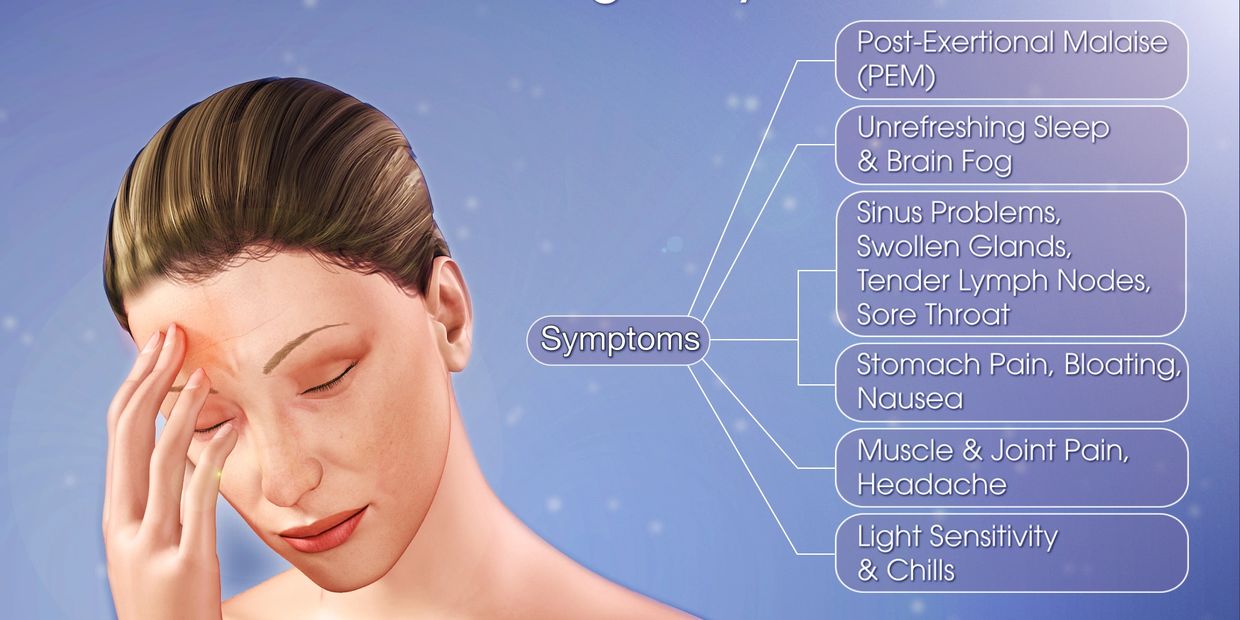Symptoms We Treat at The Health Centers

Chronic Fatigue Syndrome
Have you been feeling extreme fatigue for the past six months or longer? Or do you feel more exhausted than usual after carrying out your daily routine or simple tasks? A chronic fatigue syndrome therapy session with us may be just what you need to improve your well-being. Here’s what you should know about chronic fatigue syndrome and its different treatment options.
What is Chronic Fatigue Syndrome?
Chronic fatigue syndrome (CFS) is a long-term illness that results in severe fatigue and sleep issues that cannot be resolved by rest. Also known as myalgic encephalomyelitis, patients with chronic fatigue syndrome often experience these three major symptoms:
- Extreme fatigue that lasts for six months or longer
- Post-exertional malaise (PEM) that occurs after regular bouts of physical and mental activity
- Inability to get a full night’s rest or problems falling asleep
In addition, CFS can affect your memory and thinking capabilities—this is often called brain fog—as well as make you feel lightheaded or faint while trying to sit or stand up. Some patients with CFS may also experience chronic muscle pain, headaches, digestive issues, and shortness of breath.
What are the Different Chronic Fatigue Syndrome Treatments?
Since patients with CFS can experience various symptoms that differ from one individual to the next, treatment for CFS focuses on addressing and managing your symptoms. It’s common for patients with CFS to resort to forms of functional and integrative medicine to address their symptoms of illness and increase their wellbeing. These include:
- Meditation
- Deep breathing therapy
- Massage therapy to help with chronic headaches and muscle pain
- Acupuncture, to help with pain management
- Yoga or tai chi to improve flexibility, reduce stress and anxiety
What Are the Benefits of Chronic Fatigue Syndrome Therapy?
While there’s no cure for chronic fatigue syndrome, its symptoms can be treated and managed using several forms of functional medicine like meditation and acupuncture. Regular sessions of chronic fatigue syndrome therapy can offer several benefits, including:
- Improved cognitive function
- Increase in awareness of self and your surroundings
- Improved lung capacity
- Reduced levels of stress and pain
- Improve flexibility
- Improvements in sleep
How Long Does it Take to Work?
Treatment of CFS is based on the symptoms you exhibit, and as a result, varies from one patient to the next. Effectiveness of treatment depends on the severity of the symptoms, and some patients can see improvements within just a few sessions, while others experience improvement after several weeks. Your therapist will monitor your progress and evaluate you after each session, offering changes in what treatment along the way.

Joint Pain
Not all joint pain is alike. That’s because not all joints are alike. Joints may move slightly, like the vertebrae, or freely, like the hands and hips—and discomfort in these joints can range from minor to debilitating. If you suffer from pain in the joints, chiropractic treatment may be able to help.
Joints are more than just the point where two bones meet. These complicated mechanisms allow us to move. A joint can be made up of bones and/or some of the following components:
- Cartilage: tissue that covers the surface of a bone at a joint
- Synovial membrane: tissue that lines the joint and secretes a fluid to lubricate it
- Ligaments: bands of tough, elastic tissue that support the joint and connect the bones. They dictate how much the joint can move.
- Tendons: tissue that connects muscle to bone and helps controls movement
- Bursas: fluid-filled sacs between parts of the joint that cushion the structures and reduce friction
When something goes wrong with any of these structures that permit joints to function as they should, movement becomes restricted and painful, and daily activities can be affected. Joint pain can develop in many places in the body. It is most common in the knees, shoulders, hips and fingers, but almost any joint in the body can hurt, including the joints of the spine that connect the vertebrae to each other. A chiropractor can alleviate discomfort due to injuries or pain in the ligaments, muscles, tendons or cartilage.
Causes and Symptoms of Joint Pain Joint pain can have various causes, including injury, osteoarthritis or rheumatoid arthritis or diseases such as gout, lupus and fibromyalgia. Arthritis alone causes severe joint pain in one out of every four adults. Many of these conditions cause inflammation, which is a factor in what makes us hurt. We all know joint pain when we feel it, but symptoms may include:
- Redness
- Swelling
- Warmth
- Tenderness
- Limping
- Reduced range of motion
- Weakness
- Stiffness
- Achiness
- Twinges
The older you are, the more likely you are to develop joint pain, but it is not necessarily something you have to live with. Joint pain can often be treated effectively, and once it’s under control, a healthy lifestyle combining good nutrition and recommended exercise will help you avoid or minimize the joint pain that may come with aging.
No matter what your symptoms are, joint pain can slow you down, and if it’s not addressed, it can damage the joint permanently in some cases. Rather than living with joint pain, getting treatment for it can provide relief, may slow the progression of damage, and can help you stay active and enjoying life. A chiropractor can assess the reason for your joint discomfort and recommend appropriate treatment.
